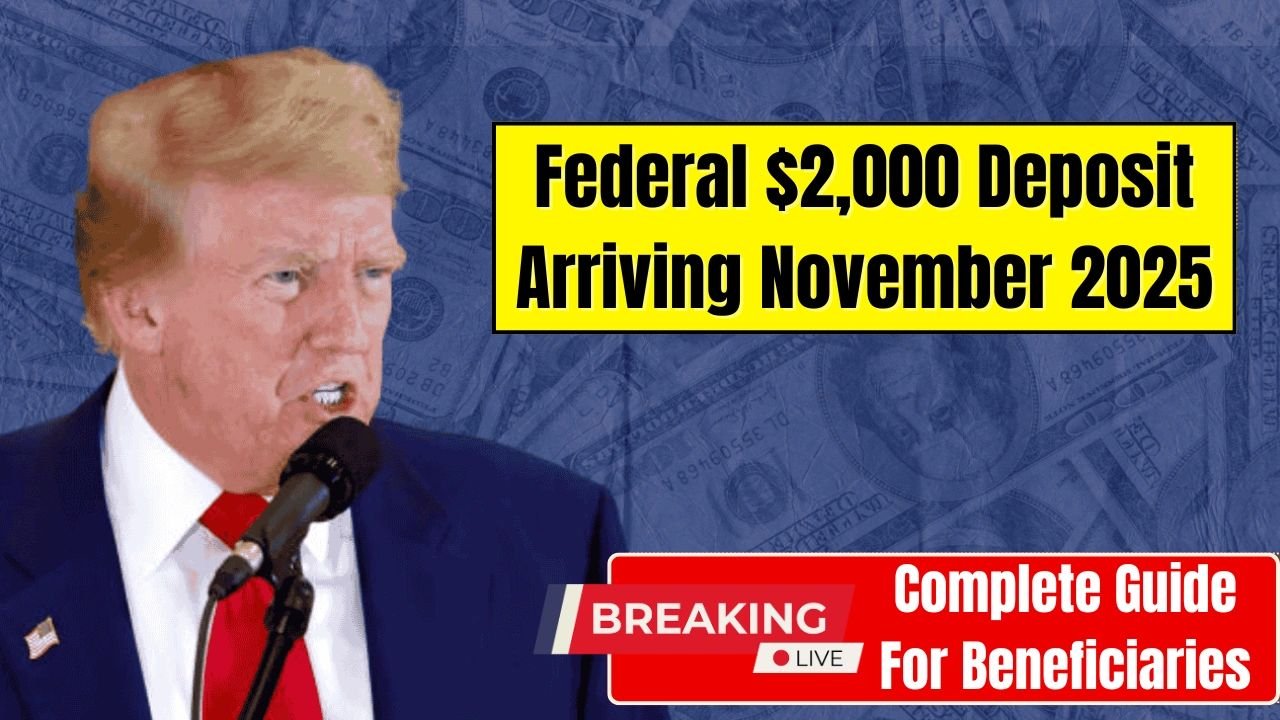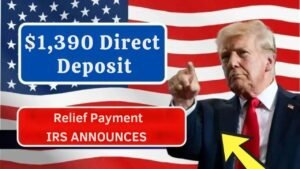Millions of Americans are keeping an eye on the potential Federal $2,000 Deposit expected in late 2025. With costs for essentials like food, housing, and energy continuing to rise, this proposed payment has sparked curiosity and hope across the country. While still under review, understanding the basics now can help households plan ahead.
What Is the Federal $2,000 Deposit?
The Federal $2,000 Deposit is a proposed one-time payment funded by national tariff revenue. The idea is to return a portion of money collected from tariffs on imported goods directly to eligible citizens. Supporters describe it as a “tariff dividend,” aiming to provide financial relief, particularly to middle- and lower-income households.
Key Highlights:
- Purpose: One-time rebate funded by tariff revenue
- Proposed Amount: $2,000 per eligible citizen
- Current Status: Proposal under government review
- Eligibility: Likely excludes high-income households
- Funding Source: Tariffs on imported goods
- Potential Delivery Methods: Direct deposit, mailed check, or tax credit
- Estimated Program Cost: $300–$500 billion
How It Could Reach Citizens
If approved, direct deposit is expected to be the fastest method, following models used in prior relief programs. For those without bank accounts, mailed checks or tax rebate options may be available. However, the exact delivery method will depend on legal and administrative frameworks.
Likely Eligibility
- Middle- and lower-income households are the primary focus
- Possible family income threshold: under $100,000 annually
- High-income households would probably be excluded
Legal and Economic Challenges
Several factors could delay or prevent the Federal $2,000 Deposit from happening:
- Supreme Court Review: A current case is examining whether certain tariffs were legally imposed. A ruling against the tariffs could reduce or eliminate available funding.
- Economic Impact: While a rebate could help households, increased consumer spending might put upward pressure on prices if supply chains remain tight.
- Administrative Hurdles: Eligibility verification, fraud protection, and coordination with financial institutions will take time to implement.
Because of these challenges, most analysts predict that even under ideal conditions, payments may not arrive until 2026 or later.
What Americans Should Do Now
- Stay updated through official sources: Treasury Department, IRS, and the White House
- Ensure bank account information is up to date for potential direct deposits
- Track news regarding Supreme Court rulings and legislative updates
Quick FAQs
Will the Federal $2,000 Deposit definitely happen?
No, it is still a proposal and depends on legal, administrative, and financial approvals.
Who is most likely to qualify?
Middle- and lower-income households are expected to be eligible.
How will the payment be delivered?
Direct deposit is the primary option; mailed checks or tax credits may also be used.
What affects the timeline the most?
The Supreme Court ruling on tariff legality is the main factor influencing when funds could be released.
When could payments realistically arrive?
Analysts suggest 2026 or later due to legal and administrative complexities.
Conclusion
The Federal $2,000 Deposit could provide meaningful relief for many Americans, but it remains uncertain. Monitoring official updates and understanding the potential process will help households prepare for this possible financial support. While hope is high, patience is key as legal and administrative steps unfold.





